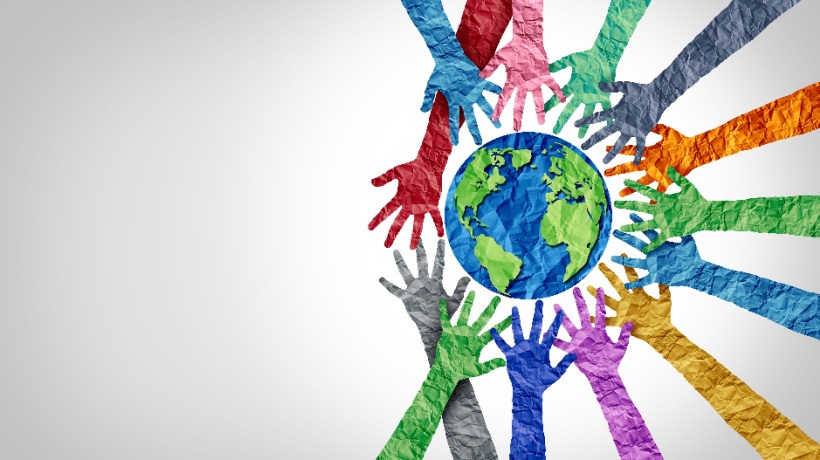
Promoting Cross-Cultural Learning For Businesses And Institutes
Cross-cultural training is becoming popular as both businesses and institutes want to expand their global reach. Now you might be wondering, what does cross-cultural training mean? Well, in simple words, it refers to gaining knowledge, skills, and insights about how people from different cultures around the world interact. It is the study of various cultures, traditions, and customs of the people.
Cultural diversity training involves engaging people in conversations on various perspectives and cultural practices. This helps people to understand, appreciate, and be open-minded about cultural diversity. Our society has become interconnected both socially and economically. That’s why it is important to develop these cross-cultural communication skills to share ideas on social and cultural issues.
In the past five years, diversity training has gone through many advancements. This concept is not limited to classes anymore but has moved beyond borders with the help of virtual sessions. In this article, we will be discussing the importance of cross-cultural learning and why it is necessary to survive in this interlinked world. We will talk about five innovative approaches to cross-cultural learning. You can adopt these practices in your daily interactions to improve your understanding of different cultures.
5 Ways To Facilitate Cross-Cultural Learning And Training
1. Build An Understanding
Building a successful cross-cultural learning environment starts with empathy. The best way to remove the barriers and start a conversation to better understand different cultural backgrounds is to put yourself in other people’s shoes and see the world through their eyes. This will let you better understand their situations and problems. This practice also lets people understand the situations that others are facing and removes any self-serving biases that people may have in their hearts.
Many educational institutes are now focusing on giving training on empathy and building an understanding of other cultures and ethnicities from the beginning. But for that to happen, teachers must be familiar with this idea so they can pass on their knowledge and methodologies to the students. That’s why we need to educate the teachers, professors, or advisors on these concepts. To do this, we must conduct educational or awareness-building seminars in both educational institutes and the corporate sector.
People—especially students—can gain essential insights into different communities by learning about their local traditions, customs, and values. One way to do this is by speaking with locals and assisting them in overcoming particular difficulties they may encounter. Adopting empathy encourages diversity and fosters mutual respect among people.
In the last five years with the boom in technology, eLearning has become a popular mode of delivering lectures. People can directly attend classes or educational seminars around the world sitting in their homes. The industry that has benefited the most from eLearning advancement is the corporate sector. Companies are investing large chunks of their profits into Learning and Development to boost their ROIs.
2. Engage In Digital Storytelling
Storytelling is another way to get people engaged and be a part of these cross-cultural learning programs to foster a sense of empathy among the audience. Incorporating this effective way of promoting diversified cultures can be done through innovative technological elements like multimedia presentations, podcasts, visual content, and blogs.
One of the best methods to convey an effective story is using photo slides or videos. You have to show people instead of just telling them. This also makes sure that your message gets across and that every member of your audience understands it with the help of clear visuals.
Use videos in your presentations to narrate engaging stories. Now, you don’t need to be a professional videographer or animator. You can simply use a professional video generator tool to create videos. Don’t worry about going into technicalities of which one is the best. Any video editing software will get the job done for you.
In this way, you can create educational videos or even edit lecture recordings for your institutions and seamlessly create a narrative for the different institutions and communities they serve. This is also a great way to help people open up about their experiences and share their perspectives on various social issues. You can use this opportunity to start conversations and build long-term collaborations with people of different backgrounds.
Digital storytelling opens up the doors for people to share their narratives, experiences, and cultural practices. It gives them the voice to make sure that their stories are heard and that people get to experience their unique traditions.
3. Participate In Virtual Exchange Programs
We are all connected in this global landscape, and any incident that happens in one part of the world can impact the entire world. Our world is changing fast, and so are the methods of adapting to and promoting this positive change. Virtual exchange programs provide an opportunity for students or knowledge enthusiasts to come together and participate in an interactive and collaborative learning environment. These virtual sessions or exchange programs are beneficial for people living in far-flung areas or those who don’t have the resources to travel. They provide the same learning experience as if you were sitting in the same room.
Virtual exchange programs take an innovative spin on cross-cultural learning practices. Through online classrooms and virtual chat rooms, people from all over the world can participate in these discussions and engage in collaborative cultural exchange programs without having to leave their homes. These programs are breaking down barriers and making it accessible for people to actively engage in such conversations.
These virtual cultural exchange programs benefit foreign students by giving them a platform to express their cultures, viewpoints, and customs. You can conduct events, workshops, or speeches to promote various cultures. These talks open windows to speak openly about the customs of different regions of the world without the fear of being judged or misunderstood.
If you are hosting such cultural exchange programs, the best way to engage with international students is to plan different activities that promote culture-sharing programs. You can also invite local students as guest participants to attend these educational sessions and learn. In this way, you can give people a chance to learn from each other and promote mutual understanding.
4. Appreciate The Beauty Of Diversity
We should start by building an open mind around different cultures. This is the only way to bridge the gap between cultures and promote a peaceful mutual learning environment. To initiate the talks on the topic of diversity, you first need to treat people with respect. This also showcases that you appreciate their diverse backgrounds.
To achieve this level of understanding, you have to put your prejudices and preconceived ideas to the side and accept a wide range of perspectives and lifestyles. This is something that can be taught in educational institutes and you can develop these habits with consistent practice.
Adopting empathy, keeping an open mind while listening to people speak about their customs, and attending culture exchange programs are just a few ways. Doing this will also make you aware of the issues that certain minority groups are facing. And this self-awareness is the first step to improving your behaviors. In this way, both the international students and the host communities can benefit from learning about the diverse cultures they bring. However, both the students, as well as the communities, must approach these talks with curiosity and stay away from any judgmental comments.
5. Developing Cross-Cultural Competence
The best way to develop cross-cultural competence is to interact with diverse groups of people. This includes working together on some research projects, or internships in foreign countries where you can have the opportunity to learn about different cultural practices. You can also volunteer for community centers or minority-owned stores or restaurants; working at these places is an awesome way to see how people interact with each other and their day-to-day lifestyles. You will be surprised to see how this experience changes your view about different people or societies.
If you are a foreign student, it is crucial that, before participating in these conferences, you explore your roots, cultural values, and religious practices. Meanwhile, as a host institute, your job is to promote hands-on practical training to develop cross-cultural competence and give the participants the skills, knowledge, and practices to effectively communicate with people from diverse backgrounds. Initiate these talks and approach the topic with sensitivity and empathy.
A few best practices are organizing seminars on cross-cultural learning, conducting workshops to give people a chance to learn through practical activities, and interacting with people from different communities. Teach individuals to learn about different cultures and be open-minded about various perspectives and traditional practices. Constructive cross-cultural learning should open the door for inclusivity and mutual understanding.
But not just that, cross-cultural competence benefits the workplace as well. It helps you interact and collaborate with your colleagues belonging to different backgrounds.
Conclusion
Throughout our conversation on cross-cultural learning and innovations, we came across two concepts: empathy and open-mindedness. These two concepts are the first steps in understanding and respecting people from different cultural backgrounds.
Cross-cultural learning is essential for building interconnected communities and nurturing mutual understanding and respect. Many innovative ways can be adopted to make this process accessible to everyone, including digital media elements and virtual classrooms. Through implementing these constructive cross-cultural learning approaches we can open the door for inclusivity and mutual understanding in the society at large. Cross-cultural learning is a never-ending journey. You have to keep finding new ways to interact with diverse people and be open to listening to their side of the story. As we have discussed in the article, this can be taught in classrooms as well as in the work environment.







